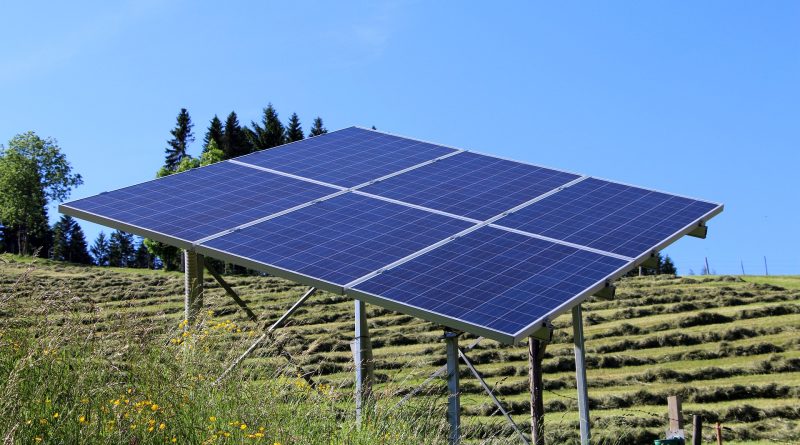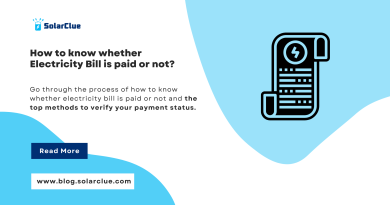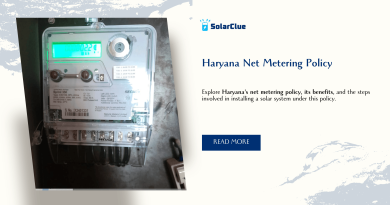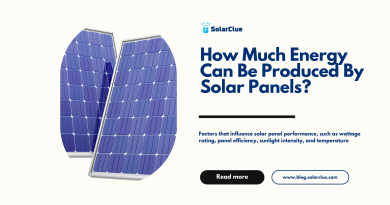Solar Grid-Tied System: Exploring Clean Energy Connections
In recent years, there has been a significant rise in the adoption of renewable energy sources. One of the most popular options for homeowners is solar energy, and a solar grid-tie system is an essential component of this setup. This blog will provide an in-depth explanation of what a solar grid-tie system is, how it works, and its advantages for homeowners. By the end, you will have a comprehensive understanding of this sustainable solution for harnessing the power of the sun.
Table of Contents
What is a Solar Grid-Tie System?
A solar grid-tie system, also known as a grid-connected or grid-tied system, is a solar power setup that allows homeowners to generate electricity using photovoltaic panels while remaining connected to the local utility grid. In simple terms, it is a way to use solar energy to power your home and sell any excess electricity back to the grid.
How Does a Solar Grid-Tie System Work?
A solar grid-tie system consists of several key components working together seamlessly. Let’s explore each of these components in detail:
1. Solar Panels
The solar panels are the heart of any solar grid-tie system. These panels are made up of photovoltaic cells that convert sunlight into direct current (DC) electricity. Multiple panels are often connected in strings to achieve the desired capacity for generating electricity.
2. Inverter
The DC electricity produced by the solar panels needs to be converted into alternating current (AC) electricity before it can be used to power the home or fed into the grid. This conversion is done by a device called an inverter. Moreover, the inverter ensures that the electricity produced matches the voltage and frequency of the grid.
3. Metering System
To keep track of the electricity generated by the solar panels and the energy consumed by the home, a metering system is installed. There are typically two meters in a solar grid-tie system: one measures the electricity consumed from the grid, while the other measures the excess electricity exported to the grid.
4. Grid Connection
A solar grid-tie system is connected to the utility grid, allowing homeowners to draw electricity from the grid when their solar panels are not producing enough power, such as during nighttime or cloudy days. On the other hand, when the panels generate excess electricity, it is seamlessly fed back into the grid and credited to the homeowner’s account.
Advantages of a Solar Grid-Tie System
Numerous benefits come with installing a solar grid-tie system for your home. Here are some of the key advantages:
1. Lower Energy Costs
By generating your own electricity, you significantly reduce your dependence on the utility grid. This translates into lower energy bills, particularly as you can sell any excess electricity back to the grid and potentially receive credits on your bill.
2. Environmental Sustainability
Solar energy is a clean and renewable source of power that produces no harmful emissions or greenhouse gases. By adopting a solar grid-tie system, you contribute to reducing carbon footprints and make a positive impact on the environment.
3. Grid Resilience
During power outages or disruptions to the grid, a solar grid-tie system combined with battery storage can provide you with a reliable source of electricity. This offers a certain level of energy independence, ensuring your essential appliances and electronics can still function.
4. Incentives and Rebates
Many countries and regions offer attractive incentives and rebates for homeowners who install solar grid-tie systems. These incentives can significantly offset the initial costs of installing the system, making it an even more financially viable option.
Conclusion
Elevate your home’s energy game with SolarClue® – your gateway to a sustainable future! Invest in a powerful and eco-friendly solar grid-tie system that allows you to harness the sun’s energy, reduce energy costs, and contribute to a greener tomorrow. With SolarClue®, enjoy the added advantages of grid resilience and access to valuable government incentives, making this technology an even more attractive investment. Take the first step towards a sustainable and environmentally friendly future by installing a solar grid-tie system through SolarClue®. Join us in shaping a cleaner world for generations to come – act now with SolarClue®!
Frequently Asked Questions
A solar grid-tied system is a solar power setup connected to the local electrical grid, allowing for the generation of electricity and the ability to feed excess energy back into the grid.
This system utilizes solar panels to convert sunlight into electricity. The generated power can be used to meet the home’s energy needs, with any surplus energy sent back to the grid.
Benefits include reduced electricity bills, the ability to contribute excess energy to the grid, lower reliance on non-renewable energy sources, and potential financial incentives.
Unlike off-grid systems, grid-tied systems usually do not require energy storage (batteries) since they can draw power from the grid when solar generation is insufficient.
By generating clean energy from the sun, a solar grid-tied system reduces reliance on fossil fuels, lowers carbon emissions, and contributes to a more sustainable and environmentally friendly energy landscape.
In most cases, grid-tied systems are designed to shut down during power outages to ensure the safety of utility workers. Special inverters may be required to enable power generation during outages.
Net metering is a billing arrangement where excess energy produced by a solar grid-tied system is sent back to the grid, and the owner receives credits or compensation for the contributed energy.
Many regions offer government incentives, tax credits, or rebates to encourage the installation of solar grid-tied systems. It’s advisable to check local programs for specific details.
Installation times can vary based on factors like system size and complexity. On average, residential installations may take a few days to a couple of weeks.
Solar grid-tied systems generally have low maintenance requirements. Regular cleaning of solar panels and occasional check-ups by professionals are typically sufficient to ensure optimal performance.




